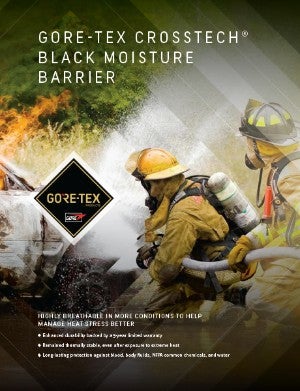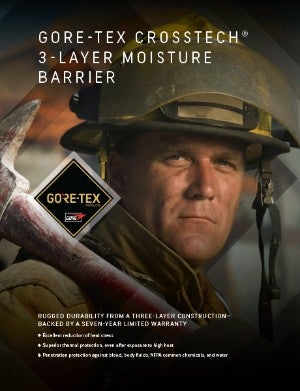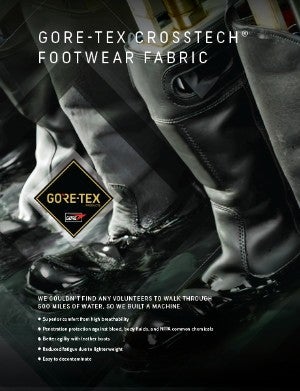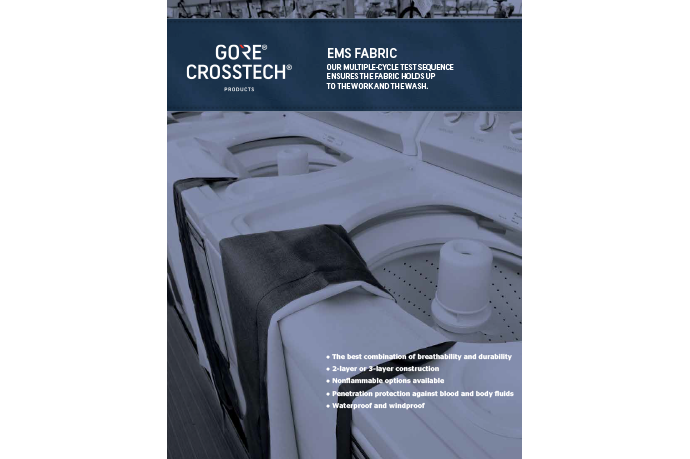THL VERSUS RET TEST METHODS
Testing the performance of the materials in your gear can provide valuable information for gear selection. The THL test has done a great deal of good for the firefighter, helping to improve how well gear can shed excess body heat; but it evaluates performance in a relatively mild environment, similar to a conditioned office space. And, it has been found that THL does not provide very useful information about how gear performs, particularly in warm or sunny conditions. The RET test can provide some of this valuable insight, which could be important to you in your gear selection.
In addition, THL did not predict the differences seen in the human trials, whereas the RET testing did.
 GORE-TEX CROSSTECH Black Moisture Barrier_CT2064.0217.2.pdf
Download PDF
Heat and Flame
Fire & Safety
GORE-TEX CROSSTECH®
GORE-TEX CROSSTECH Garments for Firefighters
GORE-TEX CROSSTECH Black Moisture Barrier_CT2064.0217.2.pdf
Download PDF
Heat and Flame
Fire & Safety
GORE-TEX CROSSTECH®
GORE-TEX CROSSTECH Garments for Firefighters
































































